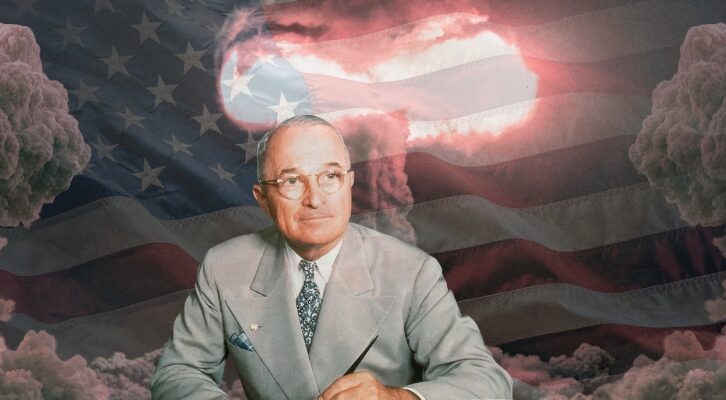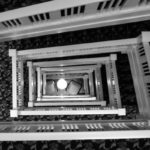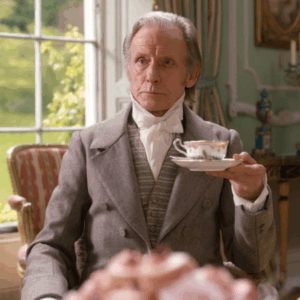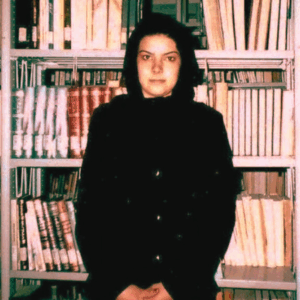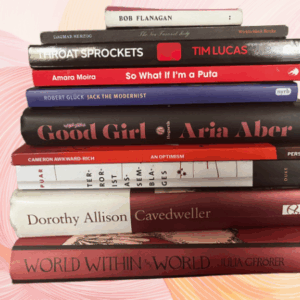
Reading in a Boom Time of Biographical Fiction
Jay Parini on the Art of Inventing Real Life
We live in an age when biographical novels have become hugely popular, some of them rising to a high level of artistry, as in Colm Toíbín’s The Master (Henry James), Michael Cunningham’s The Hours (Virginia Woolf), or Joyce Carol Oates’ Blonde (Marilyn Monroe). It’s not that fine biographical novels haven’t always been around (see Lotte in Weimar, Thomas Mann’s exhilarating 1939 novel about Goethe, or Marguerite Yourcenar’s Memoirs of Hadrian, a magisterial book published in 1951). But similar works—really good ones—have been coming at us thick and fast in the last few decades.
Traditional literary novels are in decline. The figures bear this out, as in the most recent NEA study of American reading habits. A student of mine recently said to me in frustration: “I just can’t get interested in ‘made-up’ lives.” And I must admit, my own tastes have shifted over the decades away from invented lives. I think I speak for many when I say that it’s biographical novels—which are centered on actual lives and circumstances—that have found a more secure place in my reading (and writing) life.
Philip Roth famously put forward in “Writing American Fiction” (1961) the notion that the clamorous world around us has overtaken fiction. He wondered how a novelist could compete, making a credible fictive reality in light of a world that repeatedly stupefies, sickens, and seems finally “an embarrassment to one’s own meager imagination.” With Trump in the White House, Roth’s commentary seems truer than ever: This tacky, bumptious, and thoroughly implausible creature would read as false in any novel. Nobody would believe it.
On the other hand, true stories hold our attention. Think how many films claim to be “based on actual events.” But “real” lives, so to speak, are difficult to access. I know, having written biographies of Steinbeck, Frost, Faulkner, Jesus and Gore Vidal as well as bio-fictional takes on Tolstoy, Walter Benjamin, Melville, and, most recently, Paul the Apostle in The Damascus Road. On reflection, I think I got far closer to the reality of the life at hand in the novels than in the biographies. The restrictions of straight biography frequently close out any effort to imagine the feelings of the figure at the center of the narrative. One has to rely on letters or journals or interviews for confirmation, and of course even those can be defective.
I would have to guess, for instance, how Steinbeck felt when his first wife cheated on him with a close friend or when Frost’s wife of many decades refused to allow him into the bedroom when she was dying. I wondered about Faulkner’s suicidal drinking habits but had only external evidence, as when Faulkner’s daughter told me her father would sometimes try to “rearrange her features when he was drunk,” as she put it. I was on safer ground with Gore Vidal because he was a close friend; but, even there, I had to limit myself to imagining his feelings if I was to avoid steering uncomfortably into fiction.
There is a truthfulness in fiction that is simply unavailable to the academic biographer.
I chose to write about Saint Paul because, first of all, I considered him the inventor of Christianity, a figure almost equal to Plato in his influence on western thought. But, in this case, one has only a handful of letters—perhaps six of the thirteen Pauline epistles in the New Testament are considered authentic by most scholars. The Acts of the Apostles provide a partial biography of Paul. But this is a sketch. It’s for the novelist to imagine the contours of Paul’s inner world, to guess at his motives. I saw him as a repressed homosexual, a man of amazing visionary powers, a godly person who heard voices—including the voice of God. But no scholar writing about Paul would comfortably push into his sexual feelings, his neurotic self-doubts, his anxieties about his friends, his risky compulsion to move through the fraught and dangerous world of the Roman Empire in order to bring the Good News to the masses.
To write this book, I felt compelled to visit all of the places where Paul traveled, from Jerusalem to the Jordanian desert to Asia Minor (now Turkey) to Greece and Italy. (That was the fun part, I admit.) I had to dig into Paul’s letters in Greek, and I was fortunate to know Greek, having studied the language in graduate school. I mowed through a shelf of scholarly books on the great apostle. In the end it was my job to get into his head, however, and imagine myself inside his skin as light broke over a world more than two millennia removed. What did things for him smell like, taste like, sound like, look like?
While writing this, I would often reread my favorite biographical novels for encouragement, and in recent years there have been so many to choose from: Hilary Mantel’s glittering trilogy about Thomas Cromwell, Paula McClain’s The Paris Wife, which centers movingly on Hemingway’s love affair with Hadley in Paris in the 1920s. I reread Tracy Chevalier’s Girl with Pearl Earring and Gore Vidal’s Lincoln: these have become permanent fixtures in the pantheon of bio-fiction.
I went back to The Secret Life of Emily Dickinson by Jerome Charyn and Ann Beattie’s implausible, arresting, and underrated Mrs. Nixon. I reread Russell Banks admirable Cloudsplitter, which is about John Brown and narrated by his son Owen. And how could I not return to Mario Vargas Llosa’s portrait of Trujillo in The Year of the Goat or Julia Alvarez’s take on the Mirabel sisters—rebels against Trujillo’s oppressive dictatorship, as portrayed in her In the Time of the Butterflies.
Any imagined life is both less and more than real. It’s less real in the sense that it’s not possible to resurrect the actual person. Even then, can one really know another person? Fiction offers the one and only way we have to get into the head of somebody not ourselves. If this person is someone of interest for one reason or another, there is all the more reason to want to know them and their world more deeply.
And there is a truthfulness in fiction that is simply unavailable to the academic biographer.
“The English are always degrading truths into facts,” said Oscar Wilde. He thought the intellectual value of a truth fell away in factuality. This doesn’t mean that a novelist should “lie,” not in the sense in which a world leader might drop a self-inflating fabrication. Facts—actual names and dates, places, events—are the building blocks of biographical novels, and writers who disregard them do so at their peril. But there comes a point in constructing a narrative when what you can say and know in any scholarly way becomes hopelessly unsatisfactory.
When I was writing The Last Station, a novel about Tolstoy’s final year, for example, I knew from biographical sources that Sofya Tolstoy had thrown herself into the pond on their property one day in 1910, moments after she discovered that her husband had left her for good. What I could not do was know what she was thinking and feeling as she dropped through those sheets of black water. What was the quality of her despair? This is the kind of thing only a novelist can tell us, or try to tell us. And—in increasing numbers—they’re giving it a whirl, often succeeding in ways that are changing the face of modern fiction.
Jay Parini
Jay Parini is a poet, biographer, and critic who has published seven novels, most notably The Last Station, which was made into an Academy Award-nominated film in 2009 and translated into over 25 languages. He is the D. E. Axinn Professor of English and Creative Writing at Middlebury College, and the author of Promised Land: Thirteen Books that Changed America.











